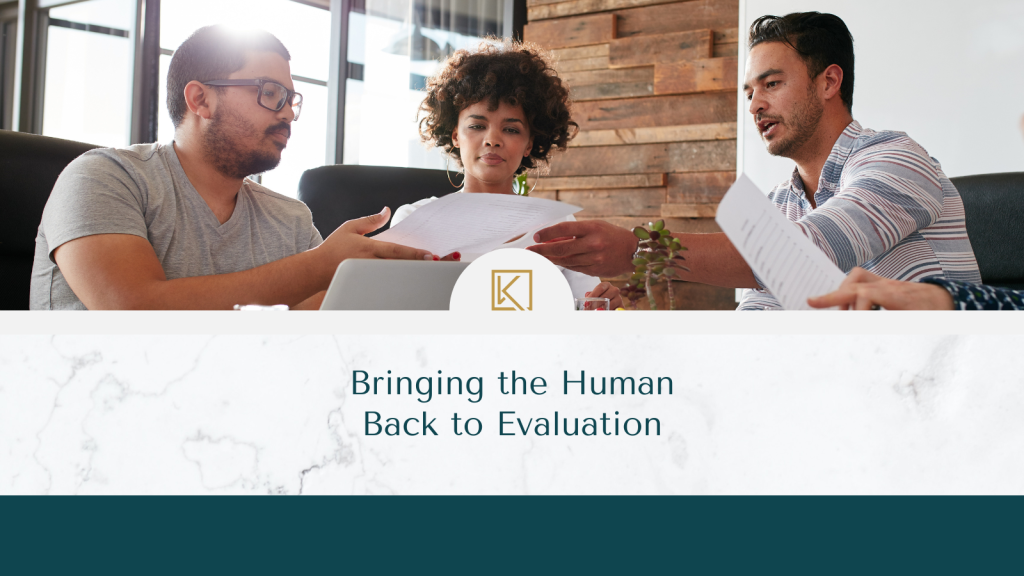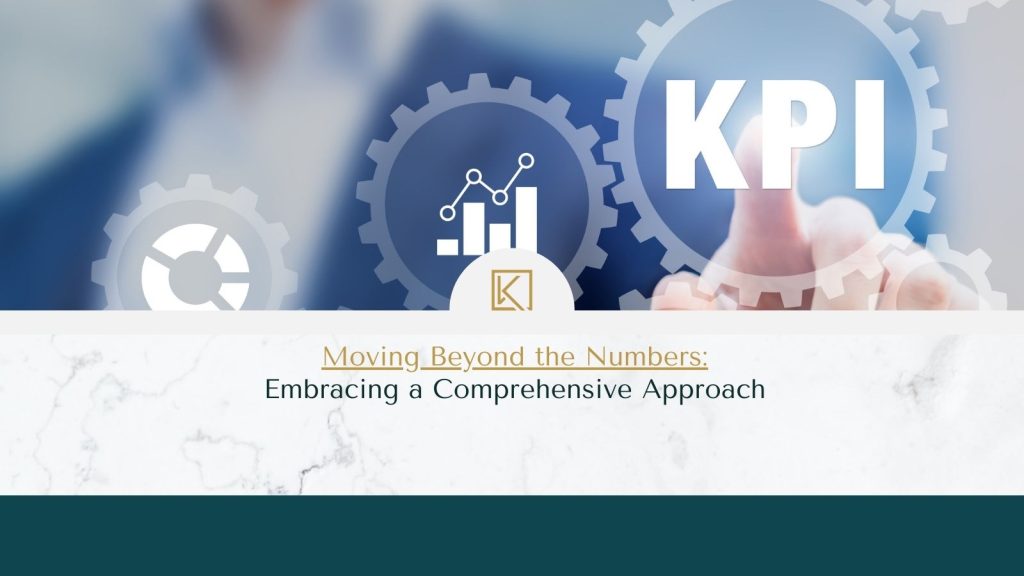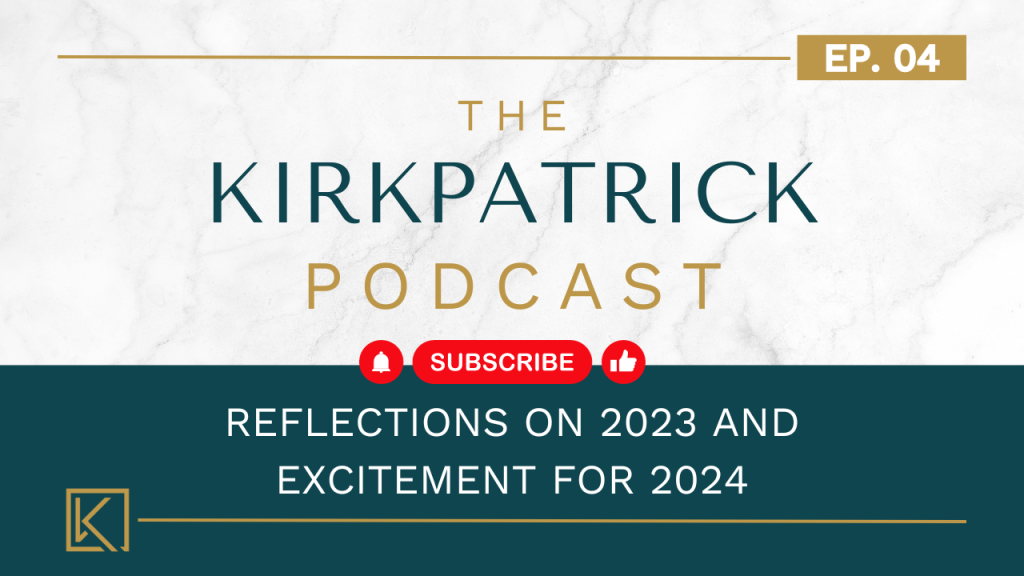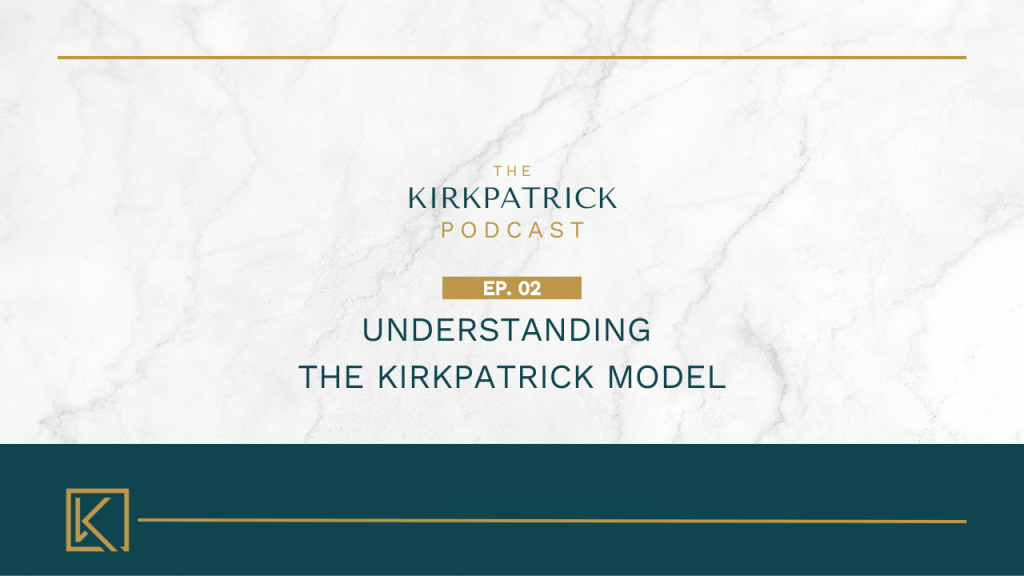-
 April 22, 2024
April 22, 2024Bringing the Human Back to Evaluation
Read MoreHave you ever felt like you’re drowning in a sea of data and tech tools when it comes to evaluating your learning and development efforts? It’s normal in today’s fast-paced…
-
 April 15, 2024
April 15, 2024Unlocking the ROI Treasure Trove in Leadership Development
Read MoreAs learning enthusiasts, we’re no strangers to the perennial challenge that comes with our territory: proving the worth of our programs. It’s all about demonstrating the return on investment (ROI)…
-
 April 9, 2024
April 9, 2024Kirkpatrick Partners Joins the GSA Schedule
Read MoreWe are thrilled to announce a significant milestone in the journey of Kirkpatrick Partners – our recent inclusion in the General Services Administration (GSA) Schedule. This achievement marks a new…
-
 April 8, 2024
April 8, 2024Moving Beyond the Numbers: Embracing a Comprehensive Approach
Read MoreIn the learning and performance world, metrics and data hold significant sway. Whether it’s through surveys or knowledge tests, numbers often take center stage when it comes to gauging program…
-
 April 1, 2024
April 1, 2024Making it Stick: Supporting Learning Transfer through an Evaluation Culture
Read MoreAs learning professionals, our goal isn’t just to deliver information. We have to ensure that participants can effectively apply what they’ve learned in their day-to-day roles. This “transfer” is key…
-
 March 23, 2024
March 23, 2024Beyond the Screen: Discover the Impact of In-Person Connections at the Kirkpatrick Summit
Read MoreDiscover what’s in store for you at the Kirkpatrick Summit!
-
 March 18, 2024
March 18, 2024Nurturing Excellence: A Business Leader’s Guide to Effective Training
Read MoreIn the dynamic world of business, an organization’s success is directly tied to the skills and know-how of its team. As the driving force behind a company’s vision, business leaders…
-
 March 12, 2024
March 12, 2024Empowering Women in the Workplace: A Celebration for Women’s History Month
Read MoreMarch isn’t just a time to get excited about spring; it’s also a time to honor and acknowledge the incredible resilience, spirit, and accomplishments of women throughout history. As we…
-
 March 12, 2024
March 12, 2024Join Us for The Kirkpatrick Summit!
Read MoreAre you a learning professional eager to take your expertise to the next level? Are you on the lookout for a community event that goes beyond discussions and brings cutting-edge…
-
 March 5, 2024
March 5, 2024Celebrating 70 Years of the Kirkpatrick Model
Read MoreCan you believe it’s been 70 years since the birth of the Kirkpatrick Model? This week, we’re taking the opportunity to celebrate this remarkable milestone in the world of training…
-
 March 1, 2024
March 1, 2024Celebrating Women’s History Month: Honoring Achievements and Inspiring Progress
Read MoreMarch marks the beginning of Women’s History Month, a time dedicated to celebrating the remarkable achievements, contributions, and resilience of women across history. This month serves as a poignant reminder…
-
 February 26, 2024
February 26, 2024Harnessing Technology: Automating Learning and Training for Smarter Work
Read MoreImagine a world where learning outcomes, training processes, and even the Kirkpatrick Model can seamlessly unfold through automation. It may sound like a distant dream, but thanks to technological advancements,…
-
 February 19, 2024
February 19, 2024Building Trust and Influencing Senior Leaders: Strategies for Gaining Buy-In
Read MoreIn the world of training and talent development, we tend to get fixated on the numbers – data, evaluation scores, and ROI. But an often-overlooked aspect can make or break…
-
 February 12, 2024
February 12, 2024Building Strong Relationships with Line Managers and Supervisors for Improved Learning and Performance
Read MoreIt’s become more and more clear over the years that organizations must provide better training and support to help supervisors master the essential skills of effective performance management. Managing diverse…
-
 February 6, 2024
February 6, 2024Help Us Help YOU – Complete Our Survey for a Chance to Win!
Read MoreAt Kirkpatrick Partners, industry leaders in training evaluation, we’re dedicated to continual improvement and innovation. We recognize that staying at the forefront of industry trends and practices is a collaborative…
-
 February 5, 2024
February 5, 2024The Best Ways to Get Buy-in from Peers and Colleagues
Read MoreBuy-in is the key to getting any training and development initiative off the ground. Before we can get senior leaders and supervisors on board, we have to gain the support…
-
 February 1, 2024
February 1, 2024Celebrate Black History Month by Embracing Knowledge, Unity, and Justice
Read MoreAs we honor Black History Month, now is the time to come together to celebrate the rich contributions and profound impact of Black individuals throughout American history and around the…
-
 January 29, 2024
January 29, 2024Uncovering and Avoiding Fatal Flaws in Evaluation, Part 2
Read MoreIn our last blog post, we talked about the first three fatal flaws of evaluation and how they can throw a wrench into the evaluation process and leave stakeholders feeling…
-
 January 22, 2024
January 22, 2024Uncovering and Avoiding Fatal Flaws in Evaluation, Pt. 1
Read MoreWe all know how important it is to properly evaluate training and development. When done right, it can be the North Star for organizational growth. Unfortunately, there are fatal flaws…
-
 January 15, 2024
January 15, 2024The Power of Buy-in: Why Gaining Leadership Support is About More Than Just Approval or Funding
Read MoreAre you still finding it tricky to get backing from leaders for your learning and performance initiatives? You’re not alone. It’s a common challenge, but the good news is that…
-
 January 8, 2024
January 8, 2024Fusing Tradition and Innovation: A Bold Approach to Learning and Performance Evaluation
Read MoreAre you eager to dive into the captivating world of learning and performance evaluation in 2024? Kirkpatrick Partners has big plans for the new year, and we are excited to…
-
New Horizons in Learning: Kirkpatrick’s 2024 Vision and Updates
Read MoreHappy New Year! We at Kirkpatrick Partners are thrilled to kick off 2024 with some exciting news! In a recent update from Vanessa Alzate, she shared some fantastic new developments…
-
 December 20, 2023
December 20, 2023Essential Strategies for Protecting Your Training Investment
Read MoreAre your training programs living up to their full potential? As learning and development professionals, it’s normal for us to wonder whether we’re properly protecting our training investment. Let’s dive…
-
 December 12, 2023
December 12, 2023Transforming Training Evaluation: Insights from the Kirkpatrick Model
Read MoreIn the latest episode of The Kirkpatrick Podcast, we took a deep dive into the Kirkpatrick Model to discover how it can revolutionize training evaluation in organizations. The Misunderstood Kirkpatrick…